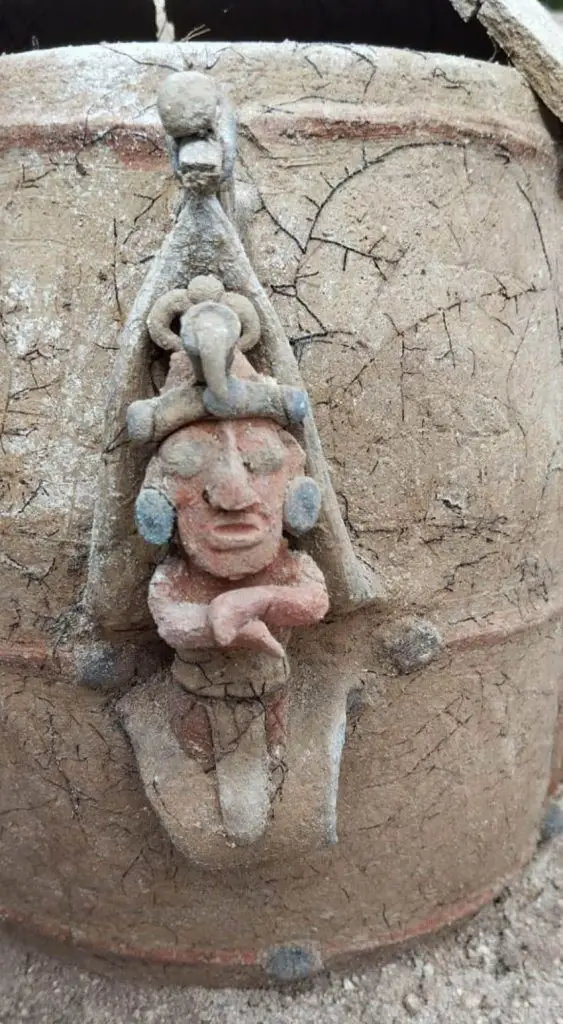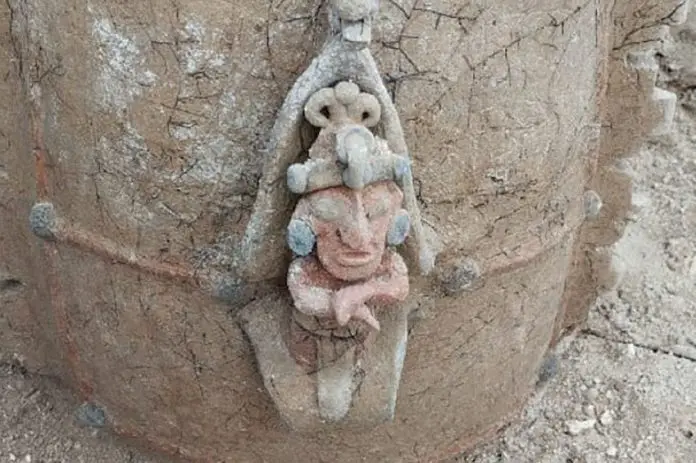Archaeologists conducting salvage work along section 7 of the Maya Train discovered a funerary urn with a carved image of a corn god, as reported by the head of the National Institute of Anthropology and History (INAH) Diego Prieto Hernández.
The funerary urn “presents a very interesting image of the corn god emerging from the leaves of a cob,” Prieto said at President Andrés Manuel López Obrador’s morning press conference on Monday.

According to Prieto Hernández, the urn was found near a similar vessel, which may indicate that the vessels were part of an ancient offering. Due to its typology, the clay pot has been identified as a Paaktzatz-style urn, and it contains the human remains.
On the front of the vessel is a small anthropomorphic figure made of pastillage (a decorative technique using pieces of ceramic paste) which alludes to the deity in his representation as an ear of corn in the growth stage.
Archaeologists who helped to recover the urn stated that similar images of the Maya deity have been found in figurines from the island of Jaina, in Campeche.
In addition to the depiction of the corn god, the urn has ornamentation resembling the Mayan symbol “ik,” which represents wind and divine breath. The lid of this urn features an owl, a symbol also found on the second vessel discovered in the area.
In the Classic period of Maya iconography, the owl was regarded as an ill omen and a symbol of war. This is evidenced in the Paaktzatz vessels crafted between 680 and 770 A.D. in the Río Bec region of Campeche.
Prieto said that archaeological work done through Jan. 8 on sections 5, 6 and 7 of the Maya Train has uncovered and protected 40,000 archaeological sites, some 1,000 artifacts, over 200,000 ceramic fragments, and 148 human burials.
In addition, Prieto noted various developments in Quintana Roo related to the Maya Train, like the upcoming opening of the archaeological site of the ancient city of Ichkabal, and the recovery of the ancient site of Oxtankah.
Mexico News Daily
